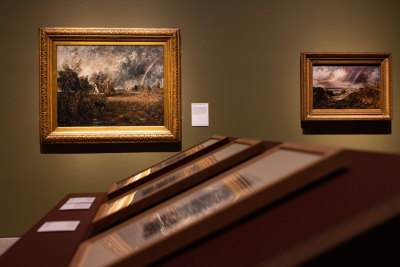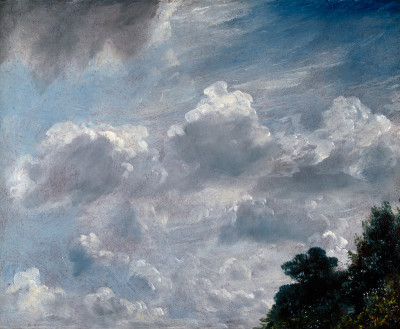Object of the Month: March 2014
Object of the Month: March 2014
Mark Fisher RA, An Orchard in the Spring
By the RA Collection team
Published 4 March 2014
In 1910, C. Lewis Hind in the Art Journal, summarised Mark Fisher’s working practice thus: ‘He just walks out, sees something, feels an irresistible desire to paint it, and proceeds to paint it in the open air.’
-
In 1910, C. Lewis Hind in the Art Journal, summarised Mark Fisher’s working practice thus: ‘He just walks out, sees something, feels an irresistible desire to paint it, and proceeds to paint it in the open air.’ An Orchard in the Spring is a small canvas that was almost certainly conceived and painted in this way. Fisher out of necessity worked on larger compositions in his studio.
Fisher largely confined his subjects to views of the English countryside near his home, but his real subject , according to Hind was ‘the brilliance, the glitter and the freshness of the world.’ The results were invariably described as ‘optimistic’ with ‘a strong predilection for sunshine’ and the bright mood of An Orchard in the Spring is typical of the themes favoured by the artist throughout his career. His work had an impact on other plein-air painters in England, such as George Clausen, RA, and was admired by younger followers of Impressionism for its free brushwork and ability to capture the immediacy of effects of light and shade. Fisher was a contemporary of the Impressionists who had trained in Paris a decade earlier than artists like Clausen. His work received belated recognition by critics in the 1890s, at the height of Impressionist influence in England.
By the 1890s, Fisher’s style had become more staccato and this tendency is seen in An Orchard in the Spring where the effect of bright sunlight is conveyed throughout with dabs of bright colour. The houses and a hedge in the middle distance limit the field of vision and the shallow space of the composition is dominated by the central motif of the fruit tree in blossom. When the painting was exhibited at the Royal Academy in 1920, the critic of The Times on 13 May described it as ‘good, of course, but without any sense of surprise or adventure in it’. Such criticism could perhaps be applied to much of Mark Fisher’s work, as George Moore remarked: ‘The melodrama of nature never appears in his pictures; his lanes and fields reflect a gentle mind that has found happiness in observing the changes of the seasons. Happy Mark Fisher!’
See more by Mark Fisher RA in our collection.
-

Mark Fisher RA, An Orchard in the Spring, c.1920.




